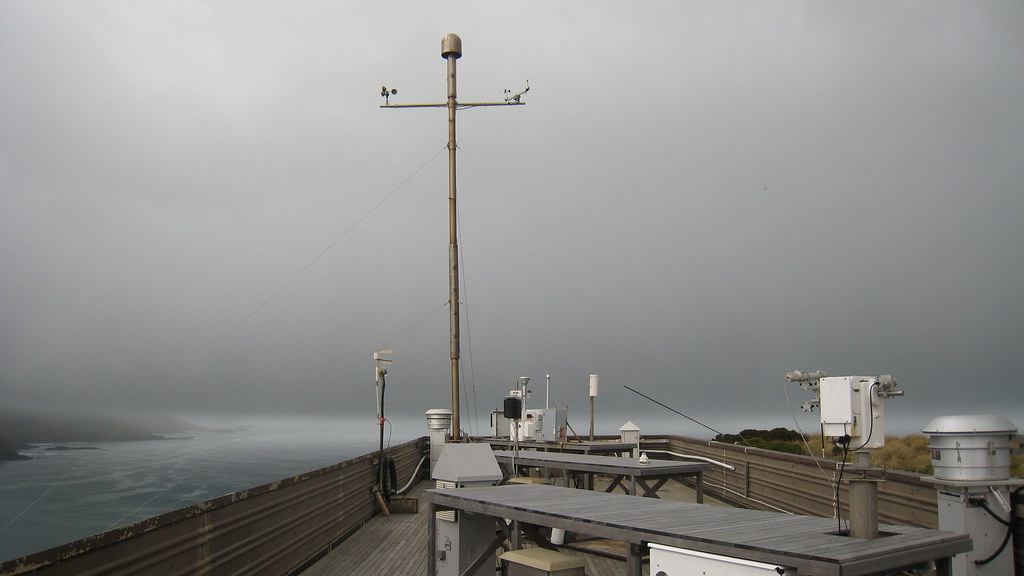由澳洲聯邦科學工業研究組織氣候科學中心(Climate Science Centre of Australia's Commonwealth Scientific and Industrial Research Organisation,CSIRO)和墨爾本大學領軍的國際科學團隊,13日發表43種溫室氣體2000年來的變化。
聯合國氣候變遷框架公約管制的六種溫室氣體為人所熟知,但事實上會影響氣候的溫室氣體有43種。
報告共同作者、CSIRO首席科學家David Etheridge博士表示,這2000年來的紀錄集合了全世界十多個實驗室的努力,是澳洲對全球氣候變遷評估的最大貢獻之一。
這篇研究「可應用於氣候模型的歷史溫室氣體濃度」(Historical greenhouse gas concentrations for climate modelling)發表於當期《地球科學模型發展》期刊。
研究指出,「當今大氣溫室氣體(Atmospheric greenhouse gas,GHG)濃度是過去80萬年來最高,使地球暖化,暖化效應雖部分被氣溶膠的冷卻效果抵銷,仍是過去150年來暖化的主因。」
Etheridge博士強調,研究納入了氣溶膠、太陽熱能、火山和土地利用對氣候的影響,以準確模擬出過去幾個世紀的氣候模型。
「我們運用當代和歷史空氣樣本、極地冰核泡泡中的空氣和陳年雪冰資料。將長期各地和各季節的溫室氣體測量值投入氣候模型,更準確地預測未來氣候。」Etheridge說,「這些觀測資料顯示,1750年起,二氧化碳、甲烷和一氧化氮等關鍵溫室氣體就幾乎不斷地快速上升。」
來自CSIRO的另一位共同作者Paul Fraser博士則表示,欣慰的是蒙特婁公約管制的CFC-12和CFC-11的確有所減少。
主要作者、墨爾本大學澳德氣候能源學院Malte Meinshausen博士指出,這些新資料庫將帶動相關氣候模型研究,投入跨政府氣候變遷小組(IPCC)2021-2022前要彙整出的下一份評估報告。
「延續澳洲和全世界的數十年來的氣候資料馬拉松,這份研究將帶頭拼湊出氣候變遷的全貌。」Meinshausen說。
Comprehensive records racking changes in all 43 greenhouse gases that contribute to human-induced climate change back 2,000 years are now available to the public as a result of research conducted by an international team of scientists.
Led by researchers from the Climate Science Centre of Australia’s Commonwealth Scientific and Industrial Research Organisation, CSIRO, and the University of Melbourne, the scientists have published the most comprehensive and highest quality records of greenhouse gases ever compiled.
People usually think of six greenhouse gases because that is the number regulated under the UN Framework Convention on Climate Change, but according to these records there are, in fact, 43 greenhouse gases that affect the climate.
“This continuous record over the last 2,000 years has been meticulously constructed by combining greenhouse gas measurements from dozens of laboratories around the world,” said CSIRO principal research scientist and report co-author Dr. David Etheridge.
He calls the study one of the largest-ever Australian contributions to global climate change assessments. The paper, titled “Historical greenhouse gas concentrations for climate modelling” is published in the current issue of the journal “Geoscientific Model Development”.
The study states, “Atmospheric greenhouse gas (GHG) concentrations are at unprecedented, record-high levels compared to the last 800, 000 years. Those elevated GHG concentrations warm the planet and – partially offset by net cooling effects by aerosols – are largely responsible for the observed warming over the past 150 years.”
Dr. Etheridge said that to arrive at the results, a comprehensive database of measurements was combined with information on aerosol, solar, volcanic and land-use impacts on climate to accurately simulate observed climate over past centuries in climate models.
“We took data from contemporary and archived air samples, and from air trapped in ice bubbles in polar ice cores and compacted snow, also called firn,” he explained.
“Providing long-term spatially and seasonally precise measurements of greenhouse gases for input into climate models will allow more robust future climate estimates,” Dr. Etheridge said.
“These observations clearly show the relentless and near-continuous rise of some of the most important greenhouse gases like carbon dioxide, methane and nitrous oxide since 1750,” Dr. Etheridge said.
Report co-author Dr. Paul Fraser from CSIRO said it is encouraging to see the decline in some greenhouse gases, such as CFC-12 and CFC-11, which is measurably in response to the Montreal Protocol.
Dr. Malte Meinshausen from the University of Melbourne’s Australian-German Climate and Energy College and lead author of the report said that this newly published database of continuous and high quality data will drive global climate model simulations currently being conducted by international modelling groups ahead of the next assessment report of the Intergovernmental Panel on Climate Change, IPCC, due in 2021-2022.
Dr. Meinshausen said, “Following the marathon of decades of efforts in Australia and around the world to collect and process all those data, our study was taking the last step of putting it all together into one coherent picture.”
※ 全文及圖片詳見:ENS






